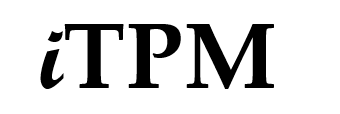It’s almost the end of the calendar year. How do you know if you are you under or over spent on trade promotion this year?
Let’s review what you need to answer that question:
Actual YTD Spending: You should have access to year-to-date spending that’s been recorded in your ERP or TPM solution. Off-invoice and net-bill aren’t complicated and easily provided in reports. However, what about bill-backs? You’ll need to know what checks were written to pay for promotions to your indirect accounts. You’ll also need an accounting of the deductions and short-pays taken by retailers and distributors to cover promotional amounts you owed them.
Planned Spending? Even if you are using Excel spreadsheets to plan your promotions, you should have access to planned volume and the associated trade spending for each promotion. You’ll need this if you have any promotions that haven’t started yet, but will start before the end of the year. What if there are some promotions that just started today and run through the end of the year? Obviously the actual promotional costs for these active events are not complete. You’ll need to adjust your year-end trade spending calculation based on planned spending for these active promotions.
Trade Promotion Accruals? This should tell you what you’ve earned to date. Live-accruals are a common type of trade budget for CPG brands. Because it’s almost year-end, this number should be close to the final number, only missing a few weeks of sales and related accruals.
Are we there yet? Families that drive to their holiday destinations hear “are we there yet?” As this relates to our trade promotion question, the answer is no. We may know how much trade funds we earned using the accruals, and we may know our year-to-date trade spending with Actuals. We can even add in planned promotions that haven’t started yet between now and the end of the year. Unfortunately, we aren’t there yet. We don’t know how many deductions to expect related to this year’ promotions, and we don’t know how many rebate claims we’ll get that require checks or ACH.
So in the spirit of the long car ride packed with children, here’s the next question….
How much further? To know if you are over or under spent, you’ll need three more report measures and calculations:
Incurred Liability? Before we figure out what deductions to expect, and how many checks to write, we FIRST need to know what we owe. In financial terms, from a manufacturer’s perspective we can call this incurred liability. For example, if we offer $1.00 per case and ship 100 cases, we technically owe $100 until we pay it by check or the customer deducts it. For the retailer, the $100 is income due and an accounts receivable asset. For the manufacturer, the $100 is an expense and an accounts payable liability. Incurred liability calculations are different for fixed-fees vs. per-unit-of-measure allowances, and also different for direct vs. indirect customers. (More details on the incurred liability calculations in a future blog. ) Is incurred liability all we need to answer our question? Unfortunately no, you’ll need two more TPM measures.
Net Liability? Now that you know how much you still owe, you need to subtract what you’ve paid from what you owe. Sounds simple, but as you may have already guessed, there’s another snag. Sometimes you pay more on a claim than what you owe. When this happens, not all of your payment reduces your promotional liability. So, the solution is to identify over payments by promotion and type of allowance. Remember the measure “Actual payments”? It’s not enough to just know what you paid. When you get paid you also have to keep track of any mounts you overpay. If you don’t you’ll never be able to accurately answer the question, “are you under or over budget?”
Finally…. Latest Estimate of Spending, or LE! So to answer the question, are you over or under spent, you need a measure called Latest Estimate. This measure uses all of the above information to give you an estimate of this year’s trade spending after all the bill-backs are paid or settled. Here’s how it’s calculated:
- For every future promotion in your budget period, use planned spending. That’s your best guess of what it will cost you.
- For every promotion that’s closed where you don’t anticipate any other promotions, use actual spending. You already know what it cost, and you don’t owe anything more than what you paid.
- What’s left are active deals, and deals that have ended but are still awaiting payment. For these deals, you need to estimate what you still owe. That’s incurred liability minus payments and settlements plus adjustments for over payments.
- Add all that up and compare it to your budget, which is probably a live accrual. Presto! You now know if you are over or under spent.
Sound complicated? It is, and that’s why you can’t answer the question unless you have a true closed-loop trade promotion management solution. Leading CPG companies use their TPM solutions to gain a competitive advantage.
If you use NetSuite as your ERP, iTPM is a native SuiteApp that calculates these important trade promotion KPIs and more! Contact us to learn more about iTPM.
Alex Ring
President
CG Squared, Inc.
